-
 Bitcoin
Bitcoin $102,709.2263
4.06% -
 Ethereum
Ethereum $2,201.9774
19.62% -
 Tether USDt
Tether USDt $0.9998
-0.06% -
 XRP
XRP $2.3054
6.53% -
 BNB
BNB $624.4314
2.96% -
 Solana
Solana $162.3982
8.26% -
 USDC
USDC $1.0000
0.01% -
 Dogecoin
Dogecoin $0.1958
10.85% -
 Cardano
Cardano $0.7718
11.68% -
 TRON
TRON $0.2560
2.76% -
 Sui
Sui $3.9740
12.33% -
 Chainlink
Chainlink $15.8412
11.17% -
 Avalanche
Avalanche $22.3283
11.59% -
 Stellar
Stellar $0.2939
10.92% -
 Shiba Inu
Shiba Inu $0.0...01432
9.93% -
 Bitcoin Cash
Bitcoin Cash $420.3867
4.68% -
 Hedera
Hedera $0.1945
8.67% -
 UNUS SED LEO
UNUS SED LEO $8.8631
0.49% -
 Toncoin
Toncoin $3.1855
5.01% -
 Hyperliquid
Hyperliquid $23.0112
8.88% -
 Litecoin
Litecoin $95.6095
4.43% -
 Polkadot
Polkadot $4.5037
10.18% -
 Monero
Monero $300.2151
5.65% -
 Dai
Dai $1.0000
-0.03% -
 Bitget Token
Bitget Token $4.5274
5.73% -
 Pi
Pi $0.6758
10.28% -
 Ethena USDe
Ethena USDe $1.0000
-0.06% -
 Pepe
Pepe $0.0...01098
30.59% -
 Uniswap
Uniswap $6.1747
23.50% -
 Bittensor
Bittensor $424.3149
10.78%
What is the investment prospect of SKALE(SKL) coin?
SKALE (SKL) is a layer-2 scalability solution for Ethereum that aims to address the network's scalability and gas fee issues by utilizing elastic sidechains to enhance throughput and cost efficiency.
Dec 08, 2024 at 10:28 pm
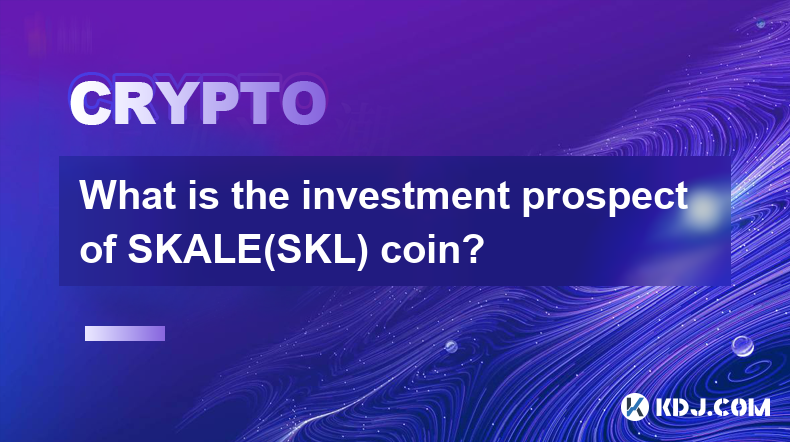
What is the Investment Prospect of SKALE (SKL) Coin?
SKALE (SKL) is a layer-2 solution for the Ethereum blockchain that aims to address scalability and transaction cost issues. It utilizes a network of elastic sidechains to handle computations off the main Ethereum network, thereby enhancing throughput and reducing gas fees. As a result, SKL has attracted considerable attention from investors seeking high-growth opportunities in the blockchain sector. This article will delve into the investment prospect of SKALE (SKL) coin, examining its fundamentals, market dynamics, and potential risks to provide a comprehensive understanding of its investment potential.
Fundamentals of SKALE (SKL) Coin
- Technical Architecture:
SKALE employs a unique architecture that leverages sidechains for scalability. These sidechains are elastic, meaning they can expand or contract based on demand, enabling efficient resource utilization and cost optimization. Developers can choose to deploy their decentralized applications (dApps) on SKALE to benefit from increased transaction speeds, lower costs, and enhanced flexibility compared to the main Ethereum network. - SKALE Manager:
At the core of SKALE's ecosystem is the SKALE Manager, a decentralized autonomous organization (DAO) that manages the network's operations. SKL token holders have voting power within the SKALE Manager, allowing them to participate in decision-making processes related to protocol updates, fee adjustments, and ecosystem development. This governance mechanism empowers the SKL community to shape the future of the platform, fostering a sense of ownership and long-term sustainability. - High Throughput and Low Latency:
SKALE sidechains offer significantly improved throughput compared to the Ethereum mainnet, handling thousands of transactions per second. Additionally, transaction latency is reduced, providing faster transaction confirmation times. These performance enhancements enable dApps built on SKALE to provide users with seamless and responsive experiences, crucial for mainstream adoption and scalability.
Market Dynamics and Adoption
- Growing DeFi and NFT Ecosystem:
Decentralized finance (DeFi) and non-fungible tokens (NFTs) are two rapidly growing sectors within the blockchain industry. SKALE's scalability and cost-effectiveness make it a compelling choice for developers looking to build innovative DeFi and NFT applications. Projects such as SushiSwap, Aavegotchi, and Chainlink have already integrated with SKALE, demonstrating its real-world utility and adoption potential. - Partnerships and Integrations:
SKALE has established strategic partnerships with industry leaders such as Polygon, Chainlink, and The Sandbox, enhancing its interoperability and extending its reach within the blockchain ecosystem. These collaborations enable cross-chain compatibility, access to data feeds, and metaverse integration, creating a synergistic environment for SKALE's growth and value proposition. Token Economics and Value Proposition:
SKL is the native utility token of the SKALE ecosystem. It is used for various purposes, including:- Payment of transaction fees on SKALE sidechains
- Governance participation through SKALE Manager voting
- Staking to secure the network and earn rewards
- Incentives for validators, delegators, and ecosystem contributors
Potential Risks and Considerations
- Competition from Other Layer-2 Solutions:
The layer-2 scaling market is highly competitive, with several established and emerging solutions vying for market share. SKALE faces competition from Polygon, Arbitrum, Optimism, and Immutable X, among others. Each solution offers unique advantages and trade-offs, and SKALE must differentiate itself to maintain a competitive edge. - Ethereum Network Dependence:
SKALE is built on top of the Ethereum blockchain, making it susceptible to the inherent risks and limitations of the network. If Ethereum experiences downtime or security breaches, SKALE's functionality and value may be impacted. Developers and investors should be aware of this dependency and factor it into their decision-making. - Regulatory Uncertainty:
The regulatory landscape surrounding cryptocurrencies and blockchain technology is still evolving. Changes in regulations could affect SKALE's operations and adoption, potentially impacting its investment prospects. It is crucial to stay informed about regulatory developments and their potential implications on the SKALE ecosystem.
Disclaimer:info@kdj.com
The information provided is not trading advice. kdj.com does not assume any responsibility for any investments made based on the information provided in this article. Cryptocurrencies are highly volatile and it is highly recommended that you invest with caution after thorough research!
If you believe that the content used on this website infringes your copyright, please contact us immediately (info@kdj.com) and we will delete it promptly.
- The PEDIGREE® brand launched PEDIGREE® DRIZZLERS™ Sauce, a mealtime sauce made just for dogs that brings bold flavors to every bite
- 2025-05-09 10:06:38
- The GENIUS Act Failed to Pass Cloture in the United States Senate on May 8
- 2025-05-09 10:06:38
- The 2025 Meme Wave Has Arrived: FloppyPepe (FPPE) Is Making Serious Noise
- 2025-05-09 10:01:06
- Stellar (XLM) Shows Renewed Momentum, Up 10% in the Last 24 Hours
- 2025-05-09 10:01:06
- Tron (TRX) Prepares for the Next Chapter as Ruvi, an Emerging Crypto Superstar, Captures the Spotlight
- 2025-05-09 09:55:12
- Dogecoin price regained and moved past $0.17
- 2025-05-09 09:55:12
Related knowledge
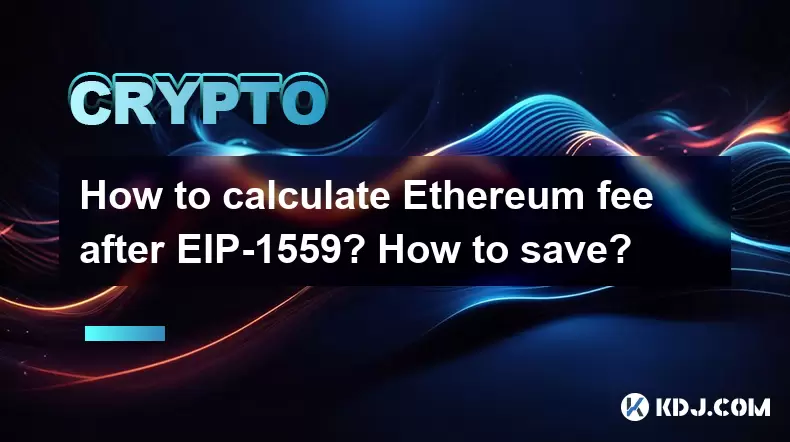
How to calculate Ethereum fee after EIP-1559? How to save?
May 09,2025 at 08:01am
The introduction of EIP-1559 in August 2021 brought significant changes to the Ethereum network's fee structure, revolutionizing how users interact with transaction costs. This article will delve into the specifics of how to calculate Ethereum fees post-EIP-1559 and offer strategies to save on these fees. Understanding EIP-1559 and its ComponentsEIP-155...
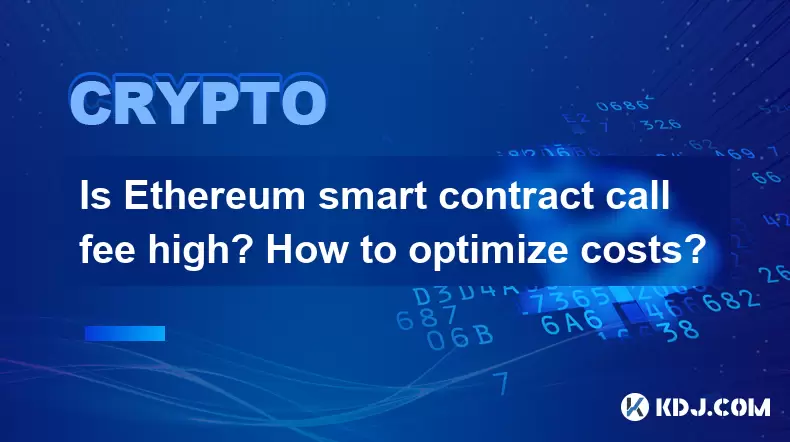
Is Ethereum smart contract call fee high? How to optimize costs?
May 08,2025 at 09:35am
Is Ethereum Smart Contract Call Fee High? How to Optimize Costs? The world of Ethereum smart contracts has revolutionized the way we think about decentralized applications and blockchain technology. However, one of the most frequently discussed topics within this realm is the cost associated with executing smart contract calls. In this article, we will ...
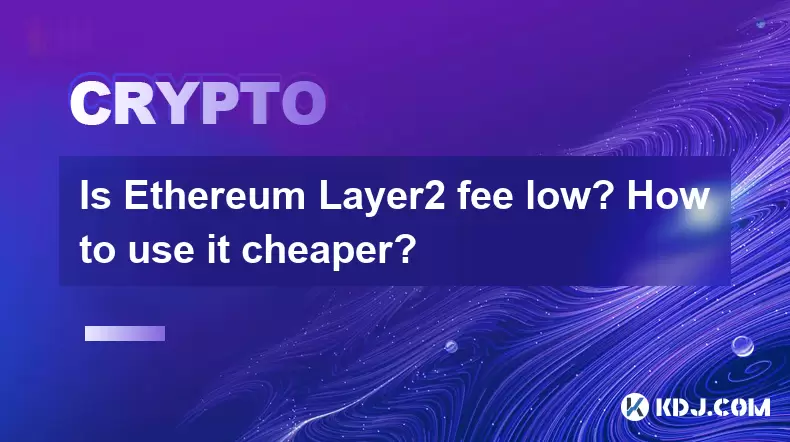
Is Ethereum Layer2 fee low? How to use it cheaper?
May 08,2025 at 03:56am
The question of whether Ethereum Layer 2 solutions offer lower fees and how to use them more economically is a topic of great interest within the cryptocurrency community. Ethereum's Layer 2 solutions have been developed to address the high transaction fees and scalability issues associated with the main Ethereum network. In this article, we will delve ...

How to calculate Ethereum network fee? How to reduce transaction costs?
May 08,2025 at 02:15am
Understanding and managing Ethereum network fees is crucial for anyone involved in transactions on the Ethereum blockchain. The network fee, also known as gas fee, is the amount of Ether (ETH) required to successfully conduct a transaction or execute a smart contract on the Ethereum network. Calculating these fees and finding ways to reduce them can sig...
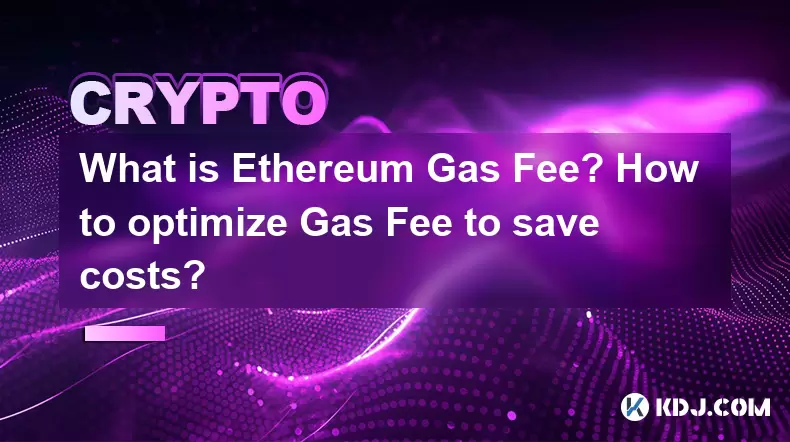
What is Ethereum Gas Fee? How to optimize Gas Fee to save costs?
May 08,2025 at 03:43am
Ethereum gas fees are a crucial aspect of interacting with the Ethereum blockchain. Understanding and optimizing these fees can significantly impact the cost-effectiveness of transactions and smart contract interactions. In this article, we will delve into what Ethereum gas fees are, how they are calculated, and provide detailed strategies for optimizin...
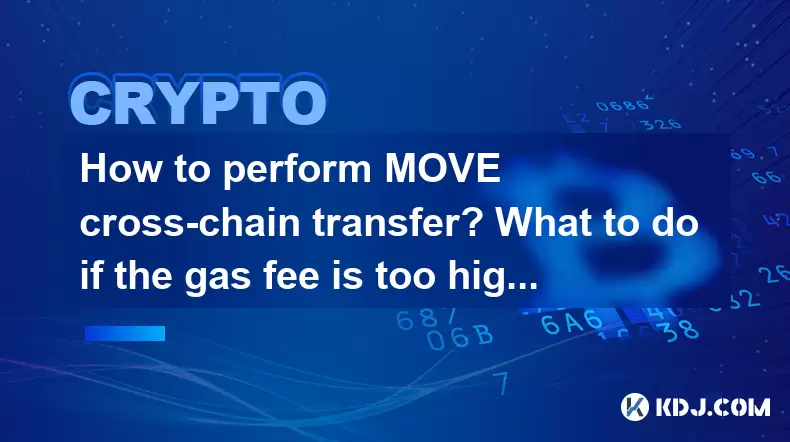
How to perform MOVE cross-chain transfer? What to do if the gas fee is too high?
May 07,2025 at 08:03pm
Introduction to MOVE Cross-Chain TransferCross-chain transfers have become an essential part of the cryptocurrency ecosystem, allowing users to move assets between different blockchain networks. One of the popular protocols for achieving this is the MOVE cross-chain transfer. This article will guide you through the process of performing a MOVE cross-cha...

How to calculate Ethereum fee after EIP-1559? How to save?
May 09,2025 at 08:01am
The introduction of EIP-1559 in August 2021 brought significant changes to the Ethereum network's fee structure, revolutionizing how users interact with transaction costs. This article will delve into the specifics of how to calculate Ethereum fees post-EIP-1559 and offer strategies to save on these fees. Understanding EIP-1559 and its ComponentsEIP-155...

Is Ethereum smart contract call fee high? How to optimize costs?
May 08,2025 at 09:35am
Is Ethereum Smart Contract Call Fee High? How to Optimize Costs? The world of Ethereum smart contracts has revolutionized the way we think about decentralized applications and blockchain technology. However, one of the most frequently discussed topics within this realm is the cost associated with executing smart contract calls. In this article, we will ...

Is Ethereum Layer2 fee low? How to use it cheaper?
May 08,2025 at 03:56am
The question of whether Ethereum Layer 2 solutions offer lower fees and how to use them more economically is a topic of great interest within the cryptocurrency community. Ethereum's Layer 2 solutions have been developed to address the high transaction fees and scalability issues associated with the main Ethereum network. In this article, we will delve ...

How to calculate Ethereum network fee? How to reduce transaction costs?
May 08,2025 at 02:15am
Understanding and managing Ethereum network fees is crucial for anyone involved in transactions on the Ethereum blockchain. The network fee, also known as gas fee, is the amount of Ether (ETH) required to successfully conduct a transaction or execute a smart contract on the Ethereum network. Calculating these fees and finding ways to reduce them can sig...

What is Ethereum Gas Fee? How to optimize Gas Fee to save costs?
May 08,2025 at 03:43am
Ethereum gas fees are a crucial aspect of interacting with the Ethereum blockchain. Understanding and optimizing these fees can significantly impact the cost-effectiveness of transactions and smart contract interactions. In this article, we will delve into what Ethereum gas fees are, how they are calculated, and provide detailed strategies for optimizin...

How to perform MOVE cross-chain transfer? What to do if the gas fee is too high?
May 07,2025 at 08:03pm
Introduction to MOVE Cross-Chain TransferCross-chain transfers have become an essential part of the cryptocurrency ecosystem, allowing users to move assets between different blockchain networks. One of the popular protocols for achieving this is the MOVE cross-chain transfer. This article will guide you through the process of performing a MOVE cross-cha...
See all articles






















































































